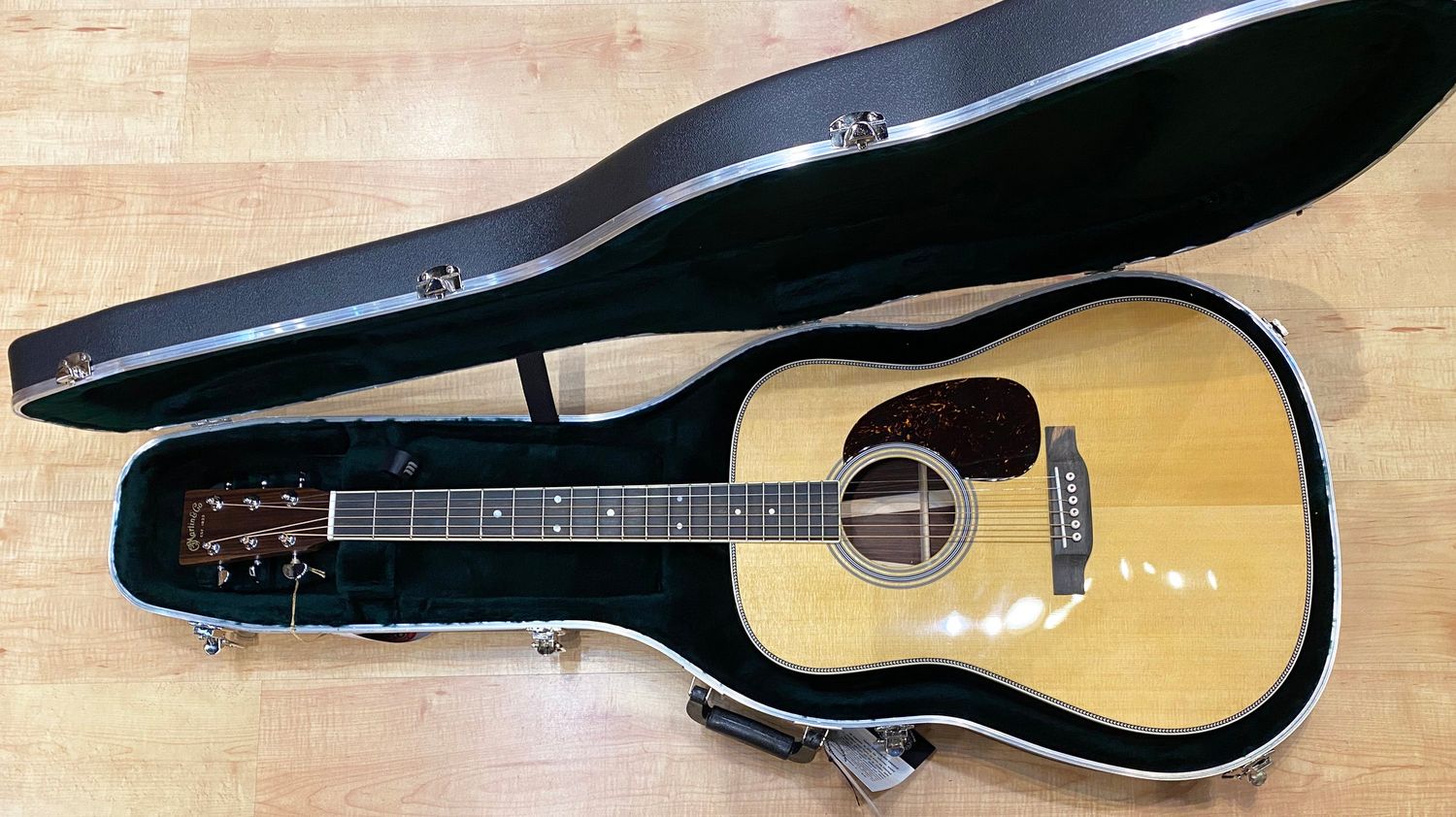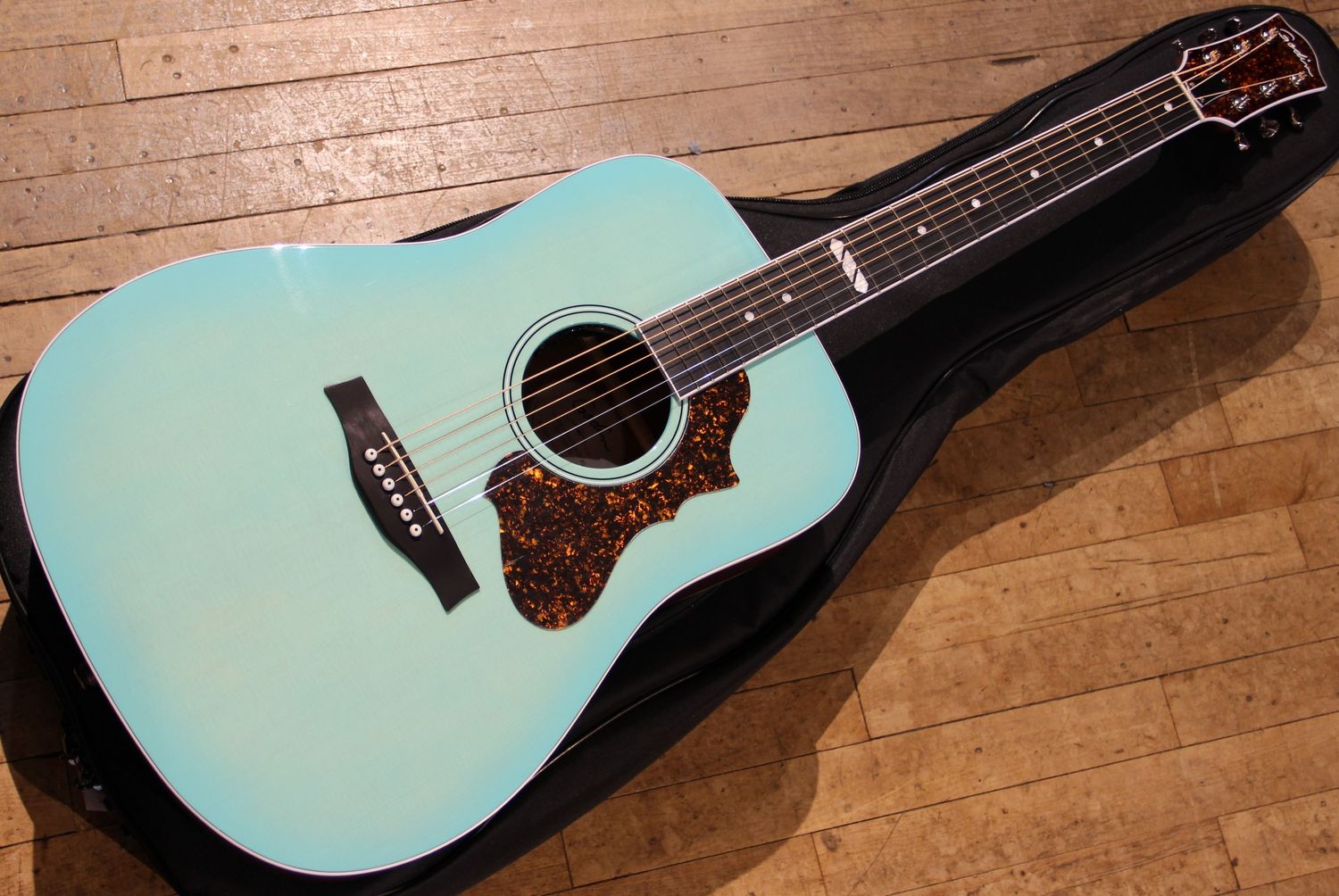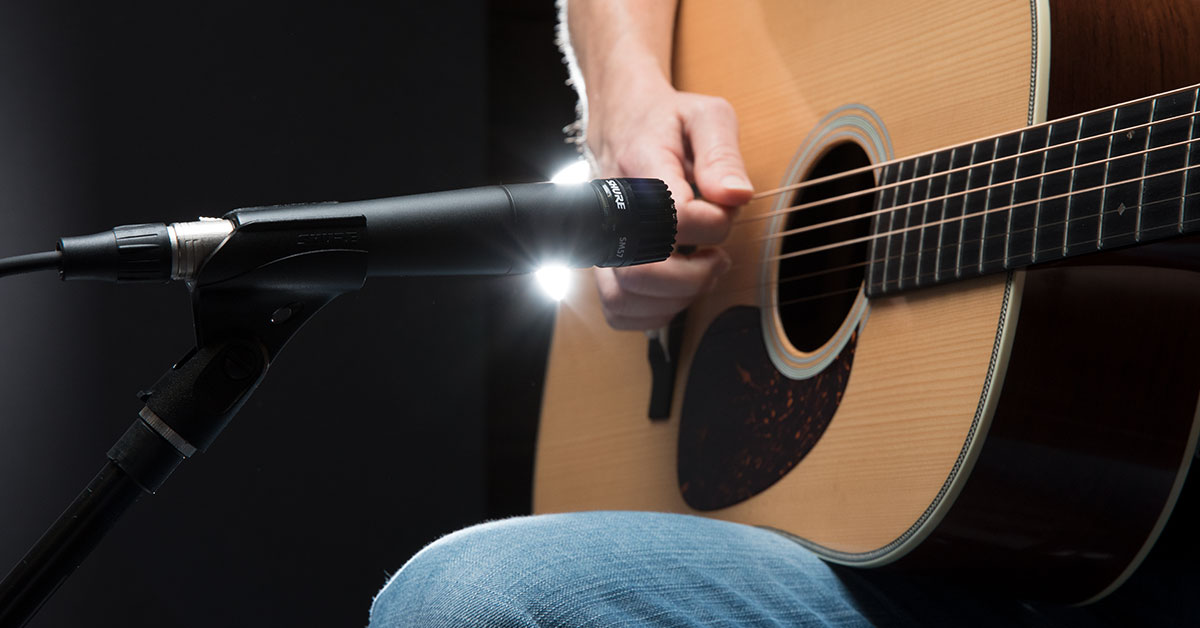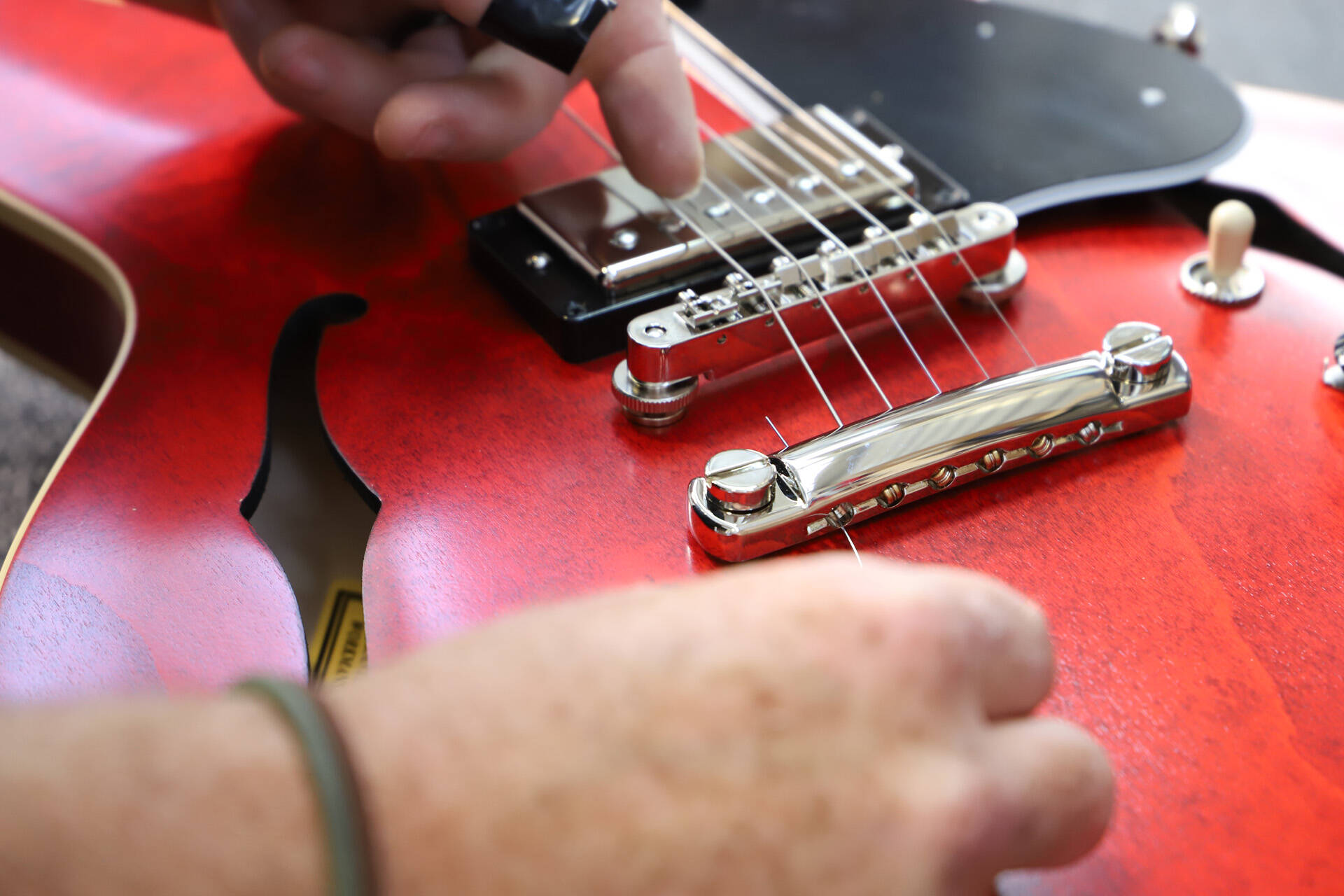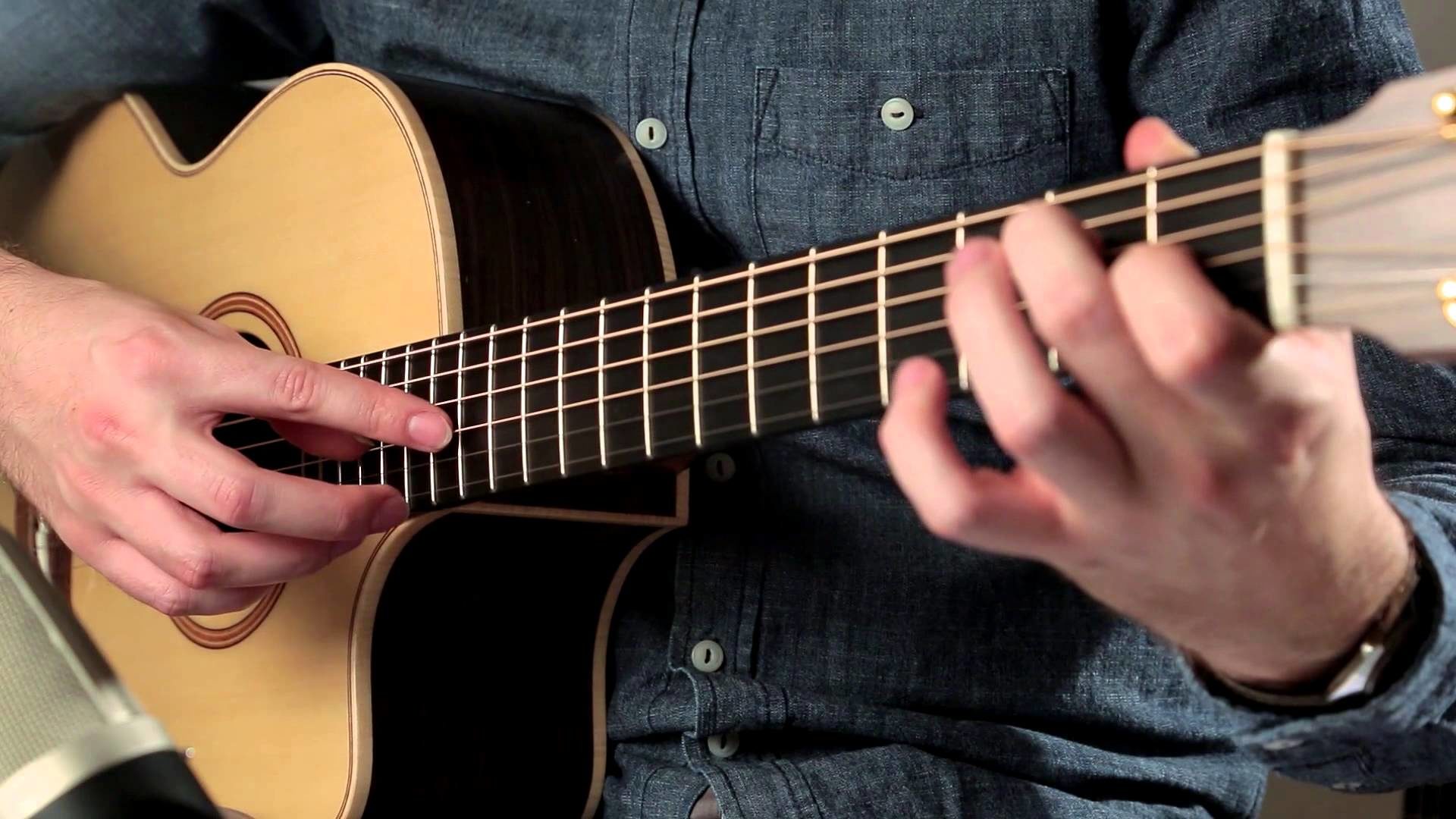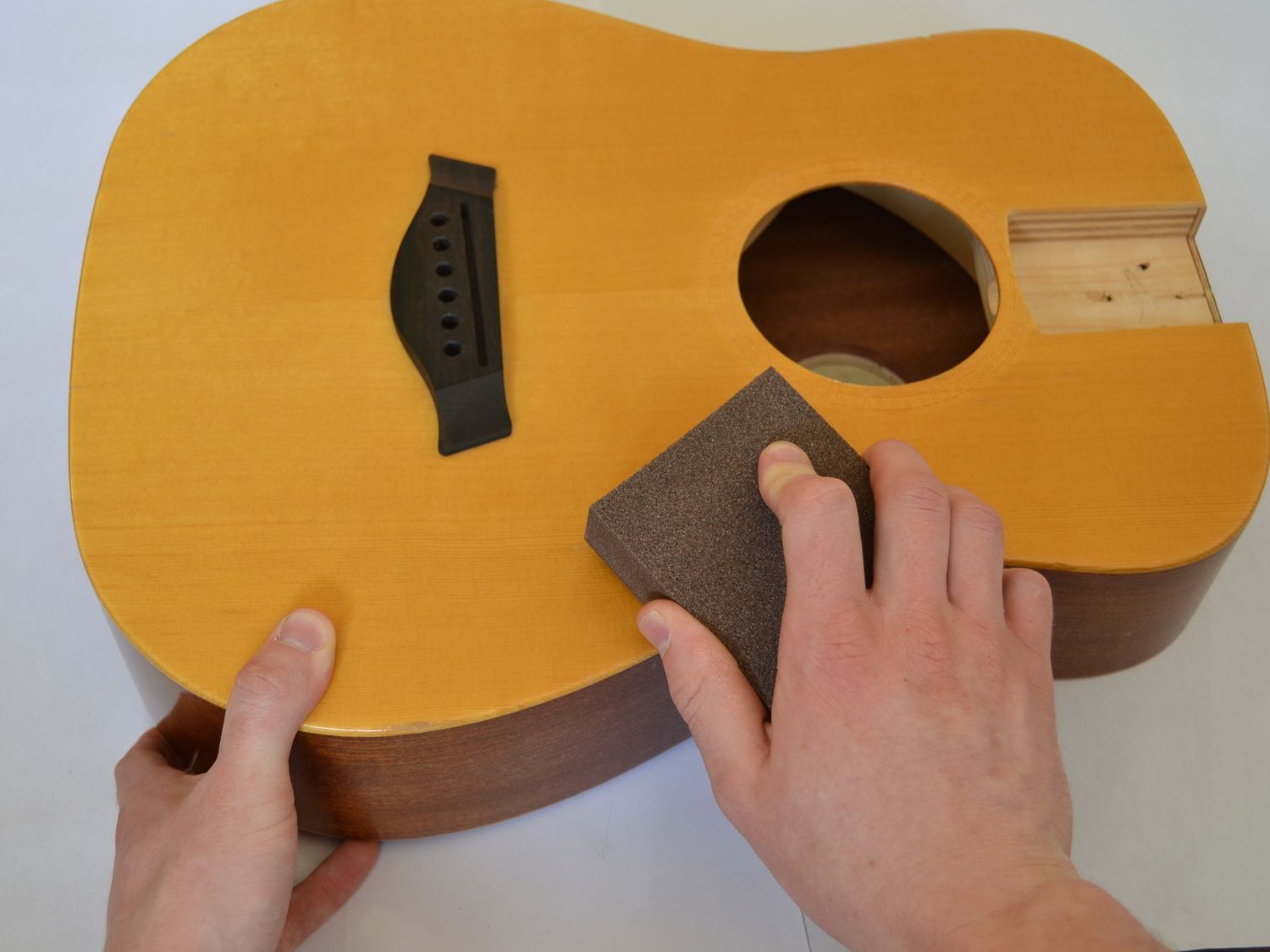Home>Instruments>Guitar>How To Put A Strap On An Acoustic Guitar


Guitar
How To Put A Strap On An Acoustic Guitar
Published: February 14, 2024
Learn how to put a strap on your acoustic guitar with our step-by-step guide. Keep your guitar secure and comfortable while playing.
(Many of the links in this article redirect to a specific reviewed product. Your purchase of these products through affiliate links helps to generate commission for AudioLover.com, at no extra cost. Learn more)
Table of Contents
Introduction
So, you've got yourself a shiny new acoustic guitar, and now you're ready to take your musical journey to the next level. One essential accessory for any guitarist, whether a beginner or a seasoned player, is a guitar strap. A well-chosen and properly fitted guitar strap not only adds comfort during long playing sessions but also provides the freedom to move around while performing.
In this guide, we'll walk you through the process of putting a strap on your acoustic guitar. Whether you're gearing up for your first live performance or simply want to play standing up, knowing how to securely attach and adjust your guitar strap is crucial. By following these steps, you'll ensure that your guitar is comfortably positioned and secure, allowing you to focus on making music without any distractions.
Now, let's dive into the details of selecting the right strap, attaching it to your guitar, adjusting its length, and testing its stability. Whether you're a folk strummer, a fingerstyle aficionado, or a blues enthusiast, mastering the art of securing your guitar strap will set you on the path to playing with confidence and ease. So, grab your acoustic guitar, and let's get started!
Step 1: Choosing the Right Strap
When it comes to selecting a guitar strap for your acoustic instrument, there are a few key factors to consider. Firstly, think about the material. Most guitar straps are made from leather, nylon, or polyester. Leather straps are known for their durability and classic look, while nylon and polyester straps are often preferred for their affordability and wide range of designs.
Next, consider the width of the strap. A wider strap distributes the weight of the guitar more evenly across your shoulder, which can help reduce strain during long playing sessions. However, some players may find slimmer straps more comfortable, particularly if they have a smaller frame or prefer a minimalist design.
Another important aspect to keep in mind is the strap length. Adjustable straps are a popular choice, as they allow you to customize the height at which the guitar hangs. This is especially useful if you switch between playing while seated and standing up. Additionally, consider the design and aesthetics of the strap. From simple solid colors to intricate patterns and artistic designs, there’s a wide array of options to suit your personal style and musical vibe.
Lastly, think about any additional features you might need. Some straps come with padding for extra comfort, while others may have locking mechanisms to ensure the guitar stays securely fastened. By taking these factors into account, you can choose a guitar strap that not only complements your playing style but also reflects your individuality as a musician.
Step 2: Attaching the Strap to the Guitar
Once you’ve selected the perfect guitar strap, it’s time to attach it to your acoustic instrument. Begin by locating the strap button or end pin at the base of the guitar. Most acoustic guitars have a strap button at the bottom of the body, while some may also have a second button at the heel of the neck. If your guitar only has one strap button, you’ll need to tie the other end of the strap to the headstock.
If your guitar has two strap buttons, simply attach one end of the strap to each button. Slide the punched holes of the strap onto the buttons, ensuring a secure fit. It’s important to double-check that the strap is firmly attached to prevent any accidental slips or falls while playing.
For guitars with a single strap button, you can tie the headstock end of the strap to the headstock itself. To do this, loop the leather lace or string provided with the strap through the pre-cut holes in the headstock, then tie it securely. Make sure the knot is tight and won’t come undone during vigorous movements while playing.
For added security, some guitarists choose to use a string or cord to tie the headstock end of the strap to the headstock, creating an extra anchor point. This can be particularly useful for heavy guitars or energetic performances where extra stability is needed.
Once you’ve attached the strap to your guitar, give it a gentle tug to ensure that it’s firmly in place. It’s essential to have full confidence in the attachment before moving on to the next step of adjusting the strap’s length to your preference.
Step 3: Adjusting the Length of the Strap
After securely attaching the strap to your acoustic guitar, it’s important to adjust its length to ensure optimal comfort and playability. The ideal strap length varies from player to player, depending on factors such as height, playing style, and personal preference. Most guitar straps are adjustable, allowing you to customize the length to your liking.
To adjust the length of the strap, locate the adjustment mechanism, which is typically a buckle or a series of punched holes and a pin. Slide the strap through the buckle or choose the appropriate hole that provides the desired length. It’s important to ensure that both ends of the strap are adjusted evenly to maintain balance and prevent the guitar from tilting forward or backward while playing.
When adjusting the strap length, consider whether you’ll primarily be playing while seated or standing. If you switch between these two positions, it’s beneficial to find a length that accommodates both scenarios. Additionally, take into account the playing height at which you feel most comfortable and in control of the instrument.
As a general guideline, many guitarists prefer the guitar to hang at about waist level when standing, allowing for ease of fretting and strumming. However, there’s no one-size-fits-all approach, and it’s essential to experiment with different lengths to find what works best for you.
Once you’ve adjusted the strap to the desired length, test it by playing in various positions to ensure that it feels secure and comfortable. If the guitar feels too high or low, make further adjustments until you find the perfect balance. Remember, the goal is to have the guitar positioned in a way that allows you to play with ease and freedom, whether you’re performing on stage or practicing at home.
Step 4: Testing the Strap
With the guitar strap securely attached and adjusted to the desired length, it’s time to put it to the test. Begin by standing up with the guitar strapped on and assuming your preferred playing position. Take a moment to assess the comfort and stability of the strap as you hold the guitar in playing position.
Start by playing some simple chords or picking a familiar melody to gauge how the guitar feels while standing. Pay attention to any strain in your shoulders or back, as well as the positioning of the instrument in relation to your body. The goal is to ensure that the guitar feels well-balanced and that the strap provides adequate support without causing discomfort.
Next, move around while playing to simulate the movements you might make during a live performance or a practice session. This will help you determine whether the strap securely holds the guitar in place, allowing you to move freely without the risk of the instrument slipping or shifting unexpectedly.
As you play and move, be mindful of the strap’s performance. Does it distribute the weight of the guitar evenly? Does the length feel appropriate for your movements and playing style? Additionally, pay attention to any potential issues such as the strap digging into your shoulder or the guitar feeling unstable.
If you encounter any discomfort or instability, make further adjustments to the strap length or position until you achieve the desired comfort and security. It’s essential to take the time to fine-tune the strap to ensure that it enhances your playing experience rather than detracting from it.
Once you’re satisfied with the strap’s performance, take a moment to appreciate the newfound freedom it provides. Whether you’re rocking out on stage or simply practicing at home, a well-fitted and reliable guitar strap is an invaluable asset that allows you to unleash your musical creativity with confidence and comfort.
Conclusion
Congratulations! You’ve successfully learned how to put a strap on your acoustic guitar, a fundamental skill that will serve you well in your musical endeavors. By carefully selecting the right strap, securely attaching it to your guitar, adjusting its length, and testing its performance, you’ve taken an important step toward enhancing your playing experience.
Remember, the process of putting on a guitar strap is not just about practicality; it’s also an opportunity to express your personal style and make a statement as a musician. Whether you opt for a classic leather strap, a vibrant nylon design, or a sleek and minimalist style, your choice of guitar strap is a reflection of your individuality and artistic identity.
As you continue to explore the world of acoustic guitar playing, don’t hesitate to experiment with different strap lengths, materials, and designs to find what best suits your playing style and comfort preferences. Keep in mind that the right guitar strap should not only provide support and stability but also inspire confidence and creativity as you make music.
With your newly acquired knowledge, you’re now equipped to confidently perform standing up, move freely on stage, and immerse yourself in the joy of playing your acoustic guitar without any restrictions. Whether you’re strumming soulful ballads, fingerpicking intricate melodies, or belting out energetic tunes, your guitar strap will be there to support you every step of the way.
So, grab your guitar, find the perfect strap, and let your musical journey unfold with comfort, style, and the freedom to play your heart out.

